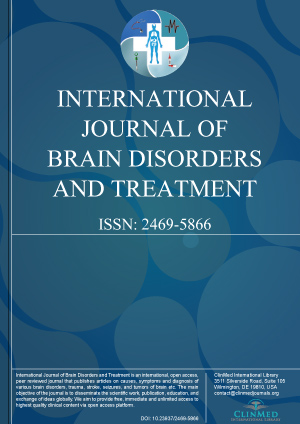Archive
Open Access DOI:10.23937/2469-5866/1410034
Intraventricular Pilocytic Astrocytoma in an Adult Patient
Joshua Hendrix and Zhenggang Xiong
Article Type: Case Report | First Published: April 10, 2020
Pilocytic astrocytomas are tumors of the central nervous system mostly during the first two decades of life. Although they are mostly common in the midline structures of children, pilocytic astrocytoma within the ventricular system of an adult is rare. To our knowledge, only one single histologically and molecularly confirmed case was documented in the literature up to this time. We report a case of a 38-yearold woman with obstructive hydrocephalus secondary to a brain tumor within the third ven...
Article Formats
- Full Article
- XML
- EPub Reader
Open Access DOI:10.23937/2469-5866/1410035
SARS-Cov-2 Neurological Infection: Implications and Possible Mechanisms
Marco Antônio Machado Schlindwein, Letícia Caroline Breis, Isabelle Pastor Bandeira and Marcus Vinicius Magno Gonçalves, MD, PhD
Article Type: Commentary | First Published: April 16, 2020
COVID-19 is an emergent disease with reported neurotropism and neuroinvasion, although its pathophysiology is not yet understood. We present the newly discoveries and hypothesis for SARS-Cov-2 neurological infection. Recently, the first case of encephalopathy associated with SARS-COV2 infection described was published. The patient rapidly progressed from fever and cough to an altered mental status, headache and unresponsive to verbal commands, with no alterations in the liquor, suggesting that t...
Article Formats
- Full Article
- XML
- EPub Reader
Open Access DOI:10.23937/2469-5866/1410033
Late-Life Alzheimer's Disease (AD) Detection Using Pruned Decision Trees
Gopi Battineni, Nalini Chintalapudi and Francesco Amenta
Article Type: Original Research | First Published: February 08, 2020
Machine Learning (ML) is a contemporary technique of artificial intelligence. These methods are exponentially rising in the medical field, especially in diagnosis and disease predictions. The present study was aimed to develop a decision tree model to predict late-life Alzheimer’s disease (AD). A dataset of 150 subjects along with 373 MRI sessions demographic values were considered in this paper. Pruned decision trees (J48) were employed to do predictive analysis on AD subjects. Model validati...
Article Formats
- Full Article
- XML
- EPub Reader

Volume 6
Issue 1
Issue 1
